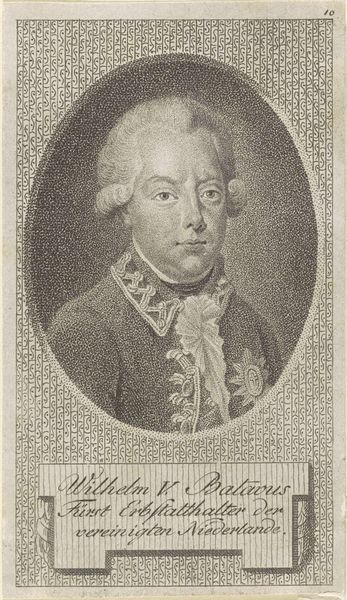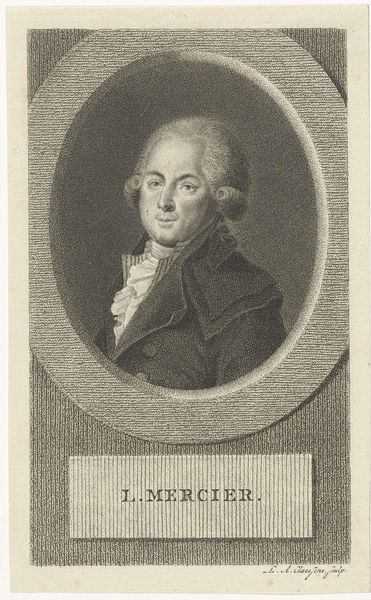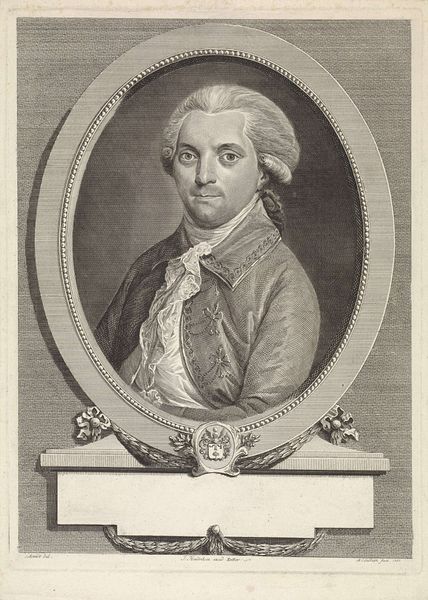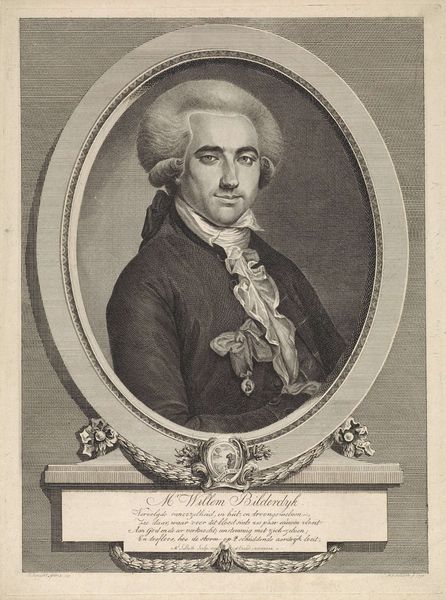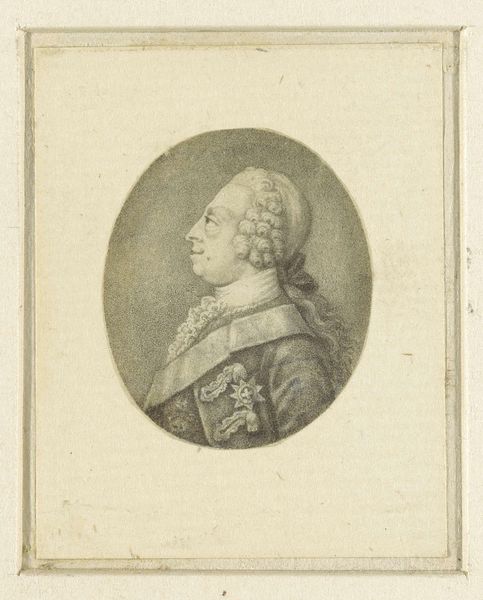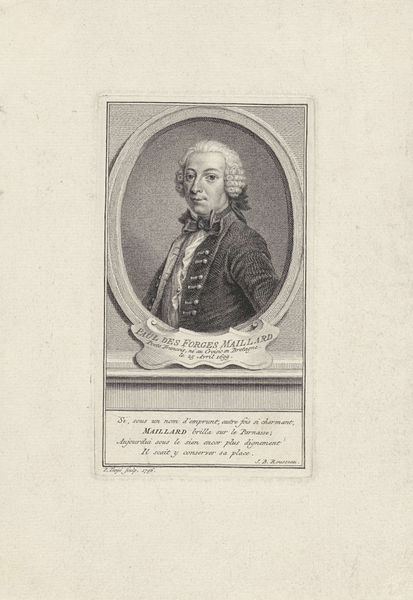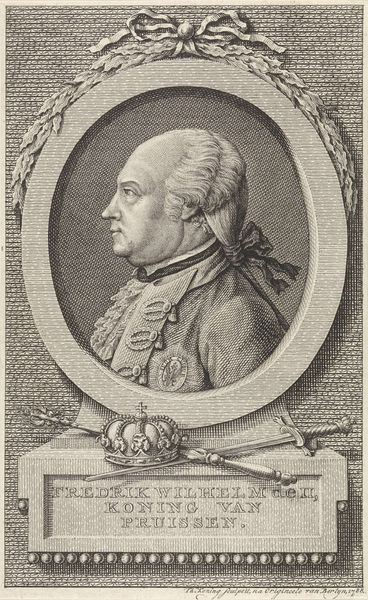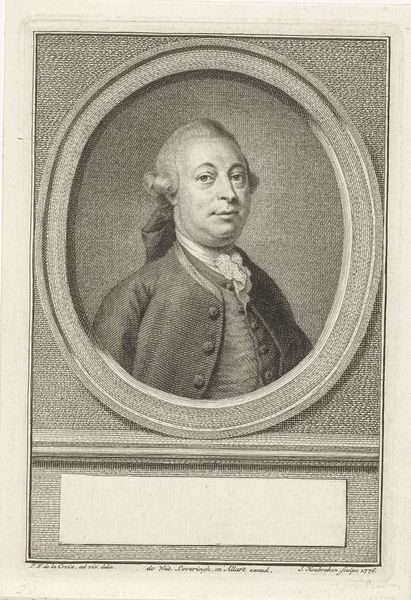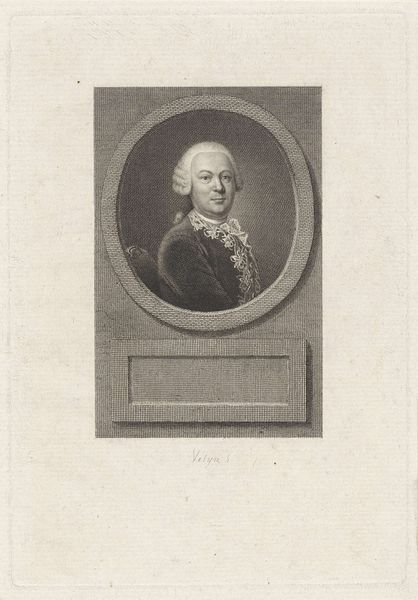
print, engraving
#
portrait
#
neoclacissism
# print
#
old engraving style
#
pencil drawing
#
19th century
#
history-painting
#
engraving
Dimensions: height 150 mm, width 90 mm
Copyright: Rijks Museum: Open Domain
Editor: So, this is Lambertus Antonius Claessens' "Portrait of Nikolaus, Count of Luckner," an engraving from around 1800. It's striking how contained the figure feels within that oval frame, almost like a cameo. What stands out to you when you look at it? Curator: I'm drawn to how the engraver has used the visual language of the time to portray Luckner as a figure of authority, even permanence. Notice the profile view? It hearkens back to ancient Roman portraiture, connecting Luckner with ideas of classical virtue and leadership. The engraver is really embedding cultural memory here. Editor: That’s interesting! So the artist is using symbols from the past to communicate something about Luckner in the present? Curator: Precisely! The profile, the neoclassical frame, even the typeface used for "Luckner" - they all speak to a desire to enshrine him within a specific historical and cultural narrative. Look closely at the gaze; it’s directed purposefully. What do you read into that? Editor: It seems to be looking towards the future, resolute, maybe? Curator: Yes, or perhaps it’s more about preserving a certain image of him *for* the future. The symbols present reveal a desire to cement his legacy. He later was guillotined during the French Revolution, making this portrait even more poignant as a cultural artifact, capturing a fleeting moment of power before its ultimate undoing. Editor: It’s amazing to see how much history and meaning can be packed into a seemingly simple portrait. Curator: Indeed. By examining the symbolic choices made, we uncover layers of cultural memory and aspiration. It shows how art participates in shaping not just individual reputations, but also collective understandings of history.
Comments
No comments
Be the first to comment and join the conversation on the ultimate creative platform.


